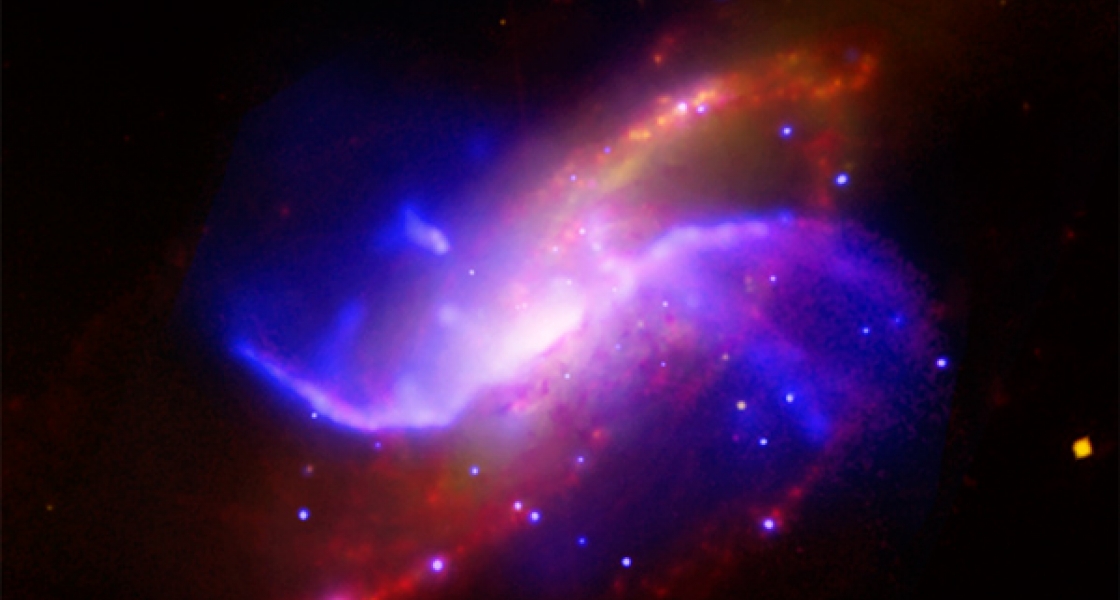Fellow Phil Armitage is excited about the discovery of several new galaxies in which a disk of water masers is orbiting within half a light year of the central massive black hole. Like their counterpart M106 (NGC 4258) discovered in 1995, these hot (600 K) water molecules mase, i.e., emit coherent radio wavelength photons when they return to lower energy states after being excited by collisions inside the gas near the black hole. The water masers orbit black holes much like a planetary system, beaming their steamy songs toward radio telescopes on Earth.
What makes the masers so interesting is that they have enabled the most accurate measurements possible of the mass of the black holes they orbit. In fact, the mass of M106 is known more accurately than that of Sgr A*, the black hole at the center of our Milky Way Galaxy. And, were astrophysicists able to discover an additional 10–15 black holes with orbiting water masers, they would be able to obtain a much more accurate estimate of the Hubble constant (H0). The Hubble constant is a measure of a rather important parameter — the current expansion speed of the Universe.
One limitation stands in the way of these exciting measurement possibilities: uncertainties about the geometry of the orbiting disks. Many astronomers have simply assumed they are circular. However, a close look at M106 reveals the maser disk is warped a few degrees. And if the disk is tilted, it may well also be eccentric. Last fall, Armitage decided the geometry problem was ripe for a theoretical intervention. He undertook an analysis of the evolution of thin disks of masers that start out eccentric under the conditions likely to prevail inside an active galactic nucleus.
Armitage found that an initially eccentric disk could become circular in about 10 million years. However, depending on the disk, it could take as much as 10 times longer to achieve this exact orbit. In the meantime, the eccentricity of the orbit would manifest as waves that flow to and fro in the disk itself. These oscillations eventually decay into a stable circular orbit. All this circularization happens in a lot less time than it takes for the masing steam parcels to be pulled into the black hole.
Armitage found that there are good theoretical reasons to expect the orbits of water maser disks to be nearly, if not exactly, circular. Interestingly, he also discovered that the process that creates necklaces of stars near a black hole may be a version of the same phenomenon that creates water maser disks. In the case of the star necklaces, the gas falling into orbit close to a black hole is unstable and breaks up to form stars. When gas falling into orbit around a black hole is more stable, it forms a gaseous disk that gives rise to maser emission as soon as it heats up to ˜600 K.
As it turns out, the black hole inside M106 is about 10 times more massive than Sgr A*, which favors more stability. It’s a galaxy where you’d expect to find water masers, Armitage says. In contrast, our own Sgr A*, which promotes less stability, has two necklaces of stars within a half a light year away from it (See JILA Light & Matter, Spring 2007). - Julie Phillips




